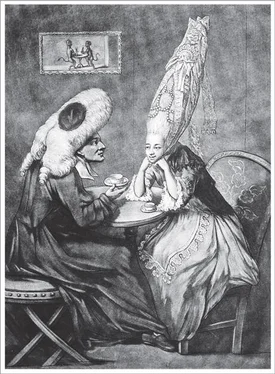Bill Bryson - At Home
Здесь есть возможность читать онлайн «Bill Bryson - At Home» весь текст электронной книги совершенно бесплатно (целиком полную версию без сокращений). В некоторых случаях можно слушать аудио, скачать через торрент в формате fb2 и присутствует краткое содержание. Жанр: Старинная литература, на английском языке. Описание произведения, (предисловие) а так же отзывы посетителей доступны на портале библиотеки ЛибКат.
- Название:At Home
- Автор:
- Жанр:
- Год:неизвестен
- ISBN:нет данных
- Рейтинг книги:4 / 5. Голосов: 1
-
Избранное:Добавить в избранное
- Отзывы:
-
Ваша оценка:
- 80
- 1
- 2
- 3
- 4
- 5
At Home: краткое содержание, описание и аннотация
Предлагаем к чтению аннотацию, описание, краткое содержание или предисловие (зависит от того, что написал сам автор книги «At Home»). Если вы не нашли необходимую информацию о книге — напишите в комментариях, мы постараемся отыскать её.
At Home — читать онлайн бесплатно полную книгу (весь текст) целиком
Ниже представлен текст книги, разбитый по страницам. Система сохранения места последней прочитанной страницы, позволяет с удобством читать онлайн бесплатно книгу «At Home», без необходимости каждый раз заново искать на чём Вы остановились. Поставьте закладку, и сможете в любой момент перейти на страницу, на которой закончили чтение.
Интервал:
Закладка:
About the houses themselves we often know even less because hardly anything survives aboveground from the earlier periods of settlement. Anglo-Saxons were extremely attached to timber as a construction material, so much so that timbran was their generic term for a building, but unfortunately it is in the nature of wood to rot and almost none of it remains. In the whole of Britain, as far as can be told, just one door survives from the Anglo-Saxon period—a battered oak door in an outer vestibule at Westminster Abbey, which escaped attention until the summer of 2005, when it was realized that it was 950 years old and thus the oldest known door in the country.
A question worth considering is how you can tell how old a door is anyway. The answer lies in dendrochronology—the scientific counting of tree rings. Tree rings give a very precise guide, each marking a year, and so all together form a kind of woody fingerprint. If you have a piece of timber whose age is certain, you can use the patterns of rings on it to match and date other pieces of wood from the same period. To get back centuries you simply find overlapping patterns. If you have a tree that lived from 1850 to 1910 and another that lived from 1890 to 1970, say, they should show overlapping patterns from 1890 to 1910, the period when they were both alive. By building up a library of ring sequences, you can go back a long way.
In Britain, it is lucky that so much was built from oak because that is the only British tree that provides clear, usable evidence. But even the best woods present problems. No two trees will ever have quite the same pattern. One may have narrower rings than another because it grew in shade or had more competition at ground level or a poorer water supply. In practice you need a huge supply of tree-ring sequences to provide a reliable database, and you must make many ingenious statistical adjustments to get an accurate reading—and for this you need the magical theorem of the Reverend Thomas Bayes, mentioned in Chapter I.
By taking a sample of wood about the thickness of a pencil and applying all the aforementioned tests, scientists worked out that the door at Westminster Abbey was made from the wood of a tree that was felled between 1032 and 1064, just before the Norman conquest, so at the very end of the Anglo-Saxon period. And that solitary door is very nearly all that has survived.*
With so little to go on, there is plenty of room for argument. Jane Grenville, in her scholarly and definitive work Medieval Housing , provides an arresting pair of illustrations showing how two archaeological teams, using the same information, envisioned the appearance of a longhouse at Wharram Percy, a lost medieval village in Yorkshire. One illustration shows a strikingly plain, basic dwelling, with walls made of mud or clunch (a composite of mud and dung) and a roof of grass or sod. The other shows a much sturdier and more sophisticated cruck-framed construction in which hefty beams have been fitted together with skill and care. The simple fact is that archaeological evidence shows mostly how buildings met the ground, not how they looked.
For a very long time it was believed that medieval peasant houses were little more than primitive huts—the kind of frail, twiggy structures that get blown down by wolves in fairy tales. The feeling was that they were unlikely to have lasted more than a single generation. Grenville quotes one scholar who felt confident enough to assert that the houses of common people were “of uniformly poor quality throughout the whole of England” right up to the time of the Tudors—quite a sweeping statement, and a wrong one, it appears. The evidence now increasingly indicates that common people of the Middle Ages, and probably long before, could have good houses if they wanted them. One clue is the growth in the late Middle Ages of specialized trades, such as thatching, carpentry, and daubing. Doors increasingly had locks, too—a clear indication that buildings and their contents were valued. Above all, cottages were evolving into a multiplicity of types—“full Wealden,” “half Wealden,” “double pile,” “rear outshut,” “H-shape,” “open hall,” “cross-passage with cow house,” “cross-passage without cow house,” and so on. The differences may seem trivial, but for the people who lived in them, they are what gave their houses character and distinction.
One thing that did not escape notice in medieval times was that nearly all the space above head height was unusable because it was so generally filled with smoke. An open hearth had certain clear advantages—it radiated heat in all directions and allowed people to sit around it on all four sides—but it was also like having a permanent bonfire in the middle of one’s living room. Smoke went wherever passing drafts directed it—and with many people coming and going, and all the windows glassless, every passing gust must have brought somebody a faceful of smoke—or otherwise rose up to the ceiling and hung thickly until it leaked out a hole in the roof.
What was needed was something that would seem, on the face of it, straightforward: a practical chimney. This took a long time to happen, however, not because of a lack of will, but because of the technical challenges. A roaring fire in a large fireplace generates a lot of heat and needs a sound flue and backstop (or reredos, to use the architectural term), and no one knew how to make good ones before about 1330 (when the word chimney is first recorded in English). Fireplaces had been brought to England by the Normans, but they weren’t impressive. They were made simply by scooping out part of the thick walls of Norman castles and poking a hole through the outer wall to let smoke escape. They weren’t greatly used outside castles because they drew air poorly and so didn’t make good fires or generate much heat. Also, they couldn’t be safely used in timber houses, which is what most houses were.
What made the difference eventually was the development of good bricks, which can deal with heat better over the long term than almost any rock can. Chimneys also permitted a change in fuel to coal—which was timely because Britain’s wood supplies were rapidly dwindling. Because coal smoke was acrid and poisonous, it needed to be contained within a fireplace—or chimneypiece, as they were first known (to distinguish them from open hearths, also known as fireplaces)—where fumes and smoke could be directed up a flue. This made for a cleaner house but a filthier world outside, and that, as we shall see, had very significant consequences for the look and design of homes.
Meanwhile, not everyone was happy with the loss of open hearths. Many people missed the drifting smoke and were convinced they had been healthier when kept “well kippered in wood smoke,” as one observer put it. As late as 1577, a William Harrison insisted that in the days of open fires “our heads did never ake.” Smoke in the roof space discouraged nesting birds and was believed to strengthen timbers. Above all, people complained that they weren’t nearly as warm as before, which was true. Because fireplaces were so inefficient, they were constantly enlarged. Some became so enormous that they were built with benches in them, letting people sit inside the fireplace, almost the only place in the house where they could be really warm.
Whatever the losses in warmth and comfort, the gains in space proved irresistible. So the development of the fireplace became one of the great breakthroughs in domestic history: they allowed people to lay boards across the beams and create a whole new world upstairs.
II
The upward expansion of houses changed everything. Rooms began to proliferate as wealthy householders discovered the satisfactions of having space to themselves. The first step, generally, was to build a grand new room upstairs called the great chamber, where the lord and his family did all the things they had done in the hall before—eat, sleep, loll, and play—but without so many other people about, returning to the great hall below only for banquets and other special occasions. Servants stopped being part of the family and became, well, servants.
Читать дальшеИнтервал:
Закладка:
Похожие книги на «At Home»
Представляем Вашему вниманию похожие книги на «At Home» списком для выбора. Мы отобрали схожую по названию и смыслу литературу в надежде предоставить читателям больше вариантов отыскать новые, интересные, ещё непрочитанные произведения.
Обсуждение, отзывы о книге «At Home» и просто собственные мнения читателей. Оставьте ваши комментарии, напишите, что Вы думаете о произведении, его смысле или главных героях. Укажите что конкретно понравилось, а что нет, и почему Вы так считаете.












